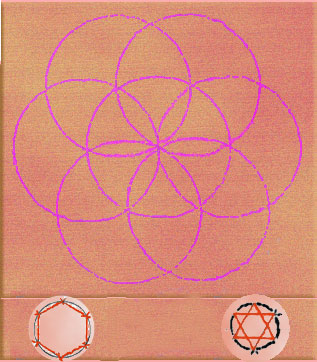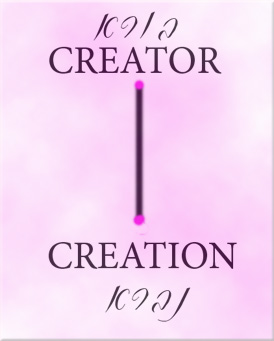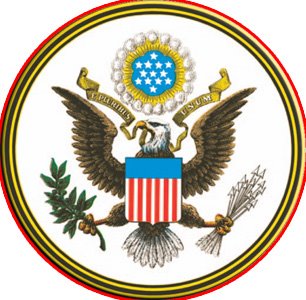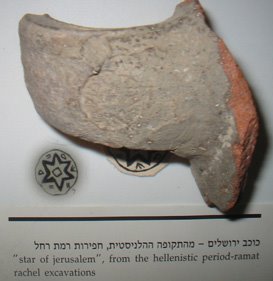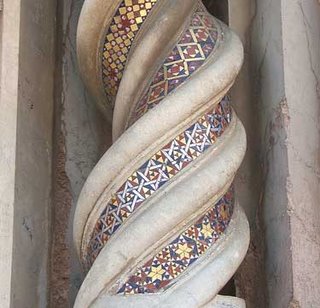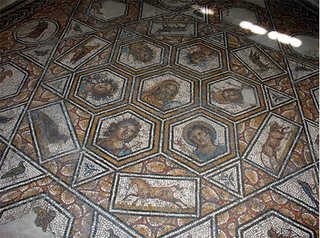
This is the cover page of Dr. Asher Eder’s book The Star of David.
Rubin Mass Ltd. published it in 1987 in English in Jerusalem.
Picture is courtesy of Oren Mass who was kind enough to let me translate the book into Hebrew and to publish it on my Hebrew blog
magendavidalbum.blogspot.com/
He also let me publish the English version on my English Blog
star-of-david.blogspot.com/
and to publish the illustrations on Flickr.
Dr. Asher Eder told me why he wrote this book:
Before the book had been published I was guiding tourist groups that came from Germany to Israel. I used to take them to Capernaum. There, in the digs, lie, side by side, two lintel stones: one with a six pointed star and the other with a five pointed star. Each time I was asked what is the difference between these two emblems and what does each of them mean. I got bored repeating myself time and time again so I decided to print ONE page that answers this question and to distribute it to my clients. This one page became a book, which was published first in German and later in English.
PREFACE
The six-pointed star is an ancient symbol. In antiquity it was known to various peoples in different parts of the world, and is still used by some of them. More recently it became known as the symbol of the Jewish people, and was chosen to adorn the flag of the Jewish State.
Now-a-days, the six-pointed star is usually spoken of as the Star of David, although f literally translated, its Hebrew term Magen David would be the Shield of David.ן
In geometry, the sign is referred to as a hexagram (lit. six sign) - a figure formed by two intersecting equilateral triangles. Startling enough, its meaning goes far beyond that of our geometricall sign. In nature, its design can be found even in such basic elements as hydrogen, and in water in its crystallized form.
Based on archeological artifacts, this book first traces the history of the hexagram. Then the esoteric meaning of its component triangles, as well as that of their harmonious interlacing, is developed and applied to different situations in our daily lives. Going one step further, we will see how the application of our symbol to modern problems can help us analyze, understand, and eventually, solve them. This, in line with the findings of Carl Jung and modern psychology after him how we can speak through symbols and how they “speak” to our sub-consciousness
Many questions may arise: Is there significance to the fact that the triangles are equilateral? What does the intersection, or integration, of these triangles tell us? What does this sign stand for, and how does its message compare to that of other symbols such as a square or a pentagram? Why, and how, did it become a symbol of the Jewish people? Why is it related to King David, and not to Abraham, Solomon, Mohammed, or some other personality? What does the term "Shield of David" imply?
Although the star is an eminently suitable symbol of Jewish culture, we will see that this does not diminish its universal significance. On the contrary, the sign which
apparently emerged from the nations of the world can become a symbol of hope for human integrity on all levels, and be cherished as a symbol of Mankind itself.
The book also deals briefly with the pentagram - a sign often confused with the
Star of David, and compares the meanings of these two signs.
Two chapters toward the end of the book probe into the question whether our symbol was known already in the First Temple; and perhaps even to Moses, that is, pre-dating King David after whom it is named now-a-days?
Finally, the last chapter examines with the help of the hexagram the age-old quest for man within the time-space correlation.
The extended notes section may be of help to those readers who wish to explore the roots of the thoughts developed in the following pages.
Readers of different cultural backgrounds may find themselves confronted with views and notions unfamiliar to them. It is my hope that this book may stimulate thoughts which transcend cultural barriers, and contribute to the wider understanding on which coexistence and peace depend.
Asher Eder
TABLE OF CONTENTS:
I THE SIX-POINTED STAR
1. A Brief History
From ancient artifacts and what they can tell us about origin and use of the
hexagram in different cultures and periods to the process in which it became a Jewish symbol, down to our times with the Nazi’s “Jewish Star” and its adoption by the State of Israel as its symbol.
2. The Six-pointed Star in Other Cultures p. 24
From ancient East India via Roman and Moslem cultures to America’s Red Indians.
3. The Meaning of Triangles p. 28
The triangle as basic mathematical, physical, and spiritual element
4. Fate-Destiny-Will p. 36
About this decisive triad in human life
5. Polarities p. 37
Some words about polarities in our dualistic world
6. Male and Female p. 39
The symmetrical hexagram composed of two equal triangles may symbolize the
harmonious relation between man and wife.
7. The Kabbalistic "Tree of Life" p. 43
A brief look into the meaning of this well-known kabbalistic graph reveals that it
shows in its way what the hexagram symbolizes
8. Law and Grace p. 49
These two fundamental concepts of any well functioning society reflected in our
symbol
9. Spirit and Matter p. 59
Are they contrasting, or complementing? Our graph points to the latter
10. Good and Evil p. 62
Are they polarities? Where does evil come from?
11. Love of Neighbour p. 63
A basic concept in Western cultures – often misunderstood and misinterpreted but
here explained with the help of the hexagram
12. Language and Revelation p. 69
Without language – no revelation; and without revelation – no language (the
term language not to be confused with mere communication!). Illustrated with the
help of the hexagram
13. Abba -- Father 73 (chapters 13-17 relate some basic concepts of
14. The Sign Aleph 76 Hebrew thought – condensed in these first four signs
15. The Sign Beth 77 (letters) of its alphabet – as a preliminary step for
16. The Sign Gimel 78 understanding the following chapters of Israel and
17. The Sign Daleth 79 its King David after whom our symbol is named)
18. The Formation of Israel p. 80
How and why Israel came into existence
19. Israel and the Nations p. 85
Are they antipodes – or complementary like the two triangles of our graph?
20. Jerusalem/Zion p. 89
About the meaning of these concepts
21. Magen David, the Shield of David p. 93
Some reasons why our symbol, the hexagram, is attributed to King David, and is
named after him
22. Jerusalem: Mother of All p. 97
“The Law shall go forth from Zion, and the Word of the Lord from Jerusalem” – to
revive mankind in His Spirit as the pre-condition for compatibility and peace
23. Enmity or Peace p. 102
Jerusalem – a “bone of contention”; or the source of peace. Our symbol, if seen as composed of three rhombs, shows graphically how the three main descendants of
Abraham and their offspring could and should complement –instead of fighting-
each other.
24. The Seven Laws of the Sons of Noah, Now & Then p. 113
They are today as valid for any well-functioning society as they were when Noah
laid them down
25. The United Nations p. 116
How do the United Nations face Jerusalem – 3000 years after its foundation as
Zion by King David; and roughly 4000 years after the formation of Israel?
26. Songs of Peace and Joy p. 118
Quotations from Psalms envisioning that state hoped for.
II THE FIVE-POINTED STAR (pentagram)
27. The Pentagram in History and Today p. 120
This sign, often confused with the “Star of David”, is named the “Seal of Solomon”
after that wise king who actually built the Temple in Jerusalem. What does that tell
us in comparison to the hexagram?
28. The Five-pointed Star in Islam p. 124
Tracing its origin and meaning in Islam. Are hexagram and pentagram symbols of
opposing or of compatible cultures?
29. Turning Towards the Six-pointed Star: Religion and the Sciences 127
About religion(s) and science(s) as opposing or complementing forces
30. Avodah and Melakhah (Service and Labor) p. 131
Do religious (spiritual) service and mundane business exclude one another – or
can and should they join like the two triangles of our symbol?
31. The Joining of the Triangles p. 137
32. Harmony of the Triangles p. 139
Only the harmonious joining of the triangles as symbols for two power fields will
result in peace and well being
33. The Sign of Man p. 143
A speculation: Was the hexagram known already to Adam, the father of mankind?
And will it become the guiding star for mankind, his children?
III. PYRAMID AND HEXAGRAM
34. Pyramid and Hexagram p. 145
The hexagram as a constructive element in designing the pyramid, and thus most
likely known to the learned Israelites in ancient Egypt
35.Pomegranates in the Temple Service p. 149
Why was Moses commanded to fix pomegranates to the hem of the High Priest; and
what can they tell us in view of our symbol?
SPACE – TIME RELATIONS
ILLUSTRATED BY THE HEXAGRAM p. 154
An in-depth investigation into this conundrum, illustrated by the hexagram
V. NOTES …………… p. 187
Numerous notes bring details and explanations for those readers who want to trace
sources, and who want to delve deeper into our fascinating subject
VI. GLOSSARY ………….. p. 221 VII. Addenda……………………………..………p. xxx
A) Christian-Jewish Relations according to the
PARABLE OF THE OLIVE TREE (Epistle to the Romans, chpt.11)
B) Essay “PEACE IS POSSIBLE BETWEEN ISHMAEL AND ISRAEL
ACCORDING TO KORAN AND TANAKH (Hebrew Bible)
ACKNOWLEDGEMENTS
I wish to thank all my teachers, Jews and non-Jews alike, whether alive on this earth or immortal in their teachings.
I also want to thank my wife Hannah for encouraging me and giving me the space to write this book.
I owe thanks as well to all those who were helpful in shaping it.
Acknowledgements to the institutions and private persons by whose courtesy the following pictures could be reproduced:
Ashmolean Museum, Oxford (figs. 1, 5, 74, 78);
British Museum, London (fig. 73);
Central Zionist Archives, Jerusalem (figs. 19, 20, 21a&b);
Israel Museum, Jerusalem (figs. 25a, 94a&b);
Israel Tax Museum, Jerusalem (fig.3);
L.A. Meyer Institute for Islamic Arts, Jerusalem (fig.25a);
The Syndics of Cambridge University Library, No CUL MsTS K5 (fig. 10)
(A copy of this artifact is on display in the Diaspora Museum, Tel Aviv)
Praehistorische Staatssammlung, Munich (fig.4).
Prague Museum (fig. 15)
Dr. Ed Metzlerr, Herborn/Germany (fig. 93)
 The following paragraph is from Dr. Asher Eder’s book The Star of David, which was published in 1987 in English in Jerusalem by Rubin Mass Ltd. The publication here is courtesy of Oren Mass
The following paragraph is from Dr. Asher Eder’s book The Star of David, which was published in 1987 in English in Jerusalem by Rubin Mass Ltd. The publication here is courtesy of Oren Mass

